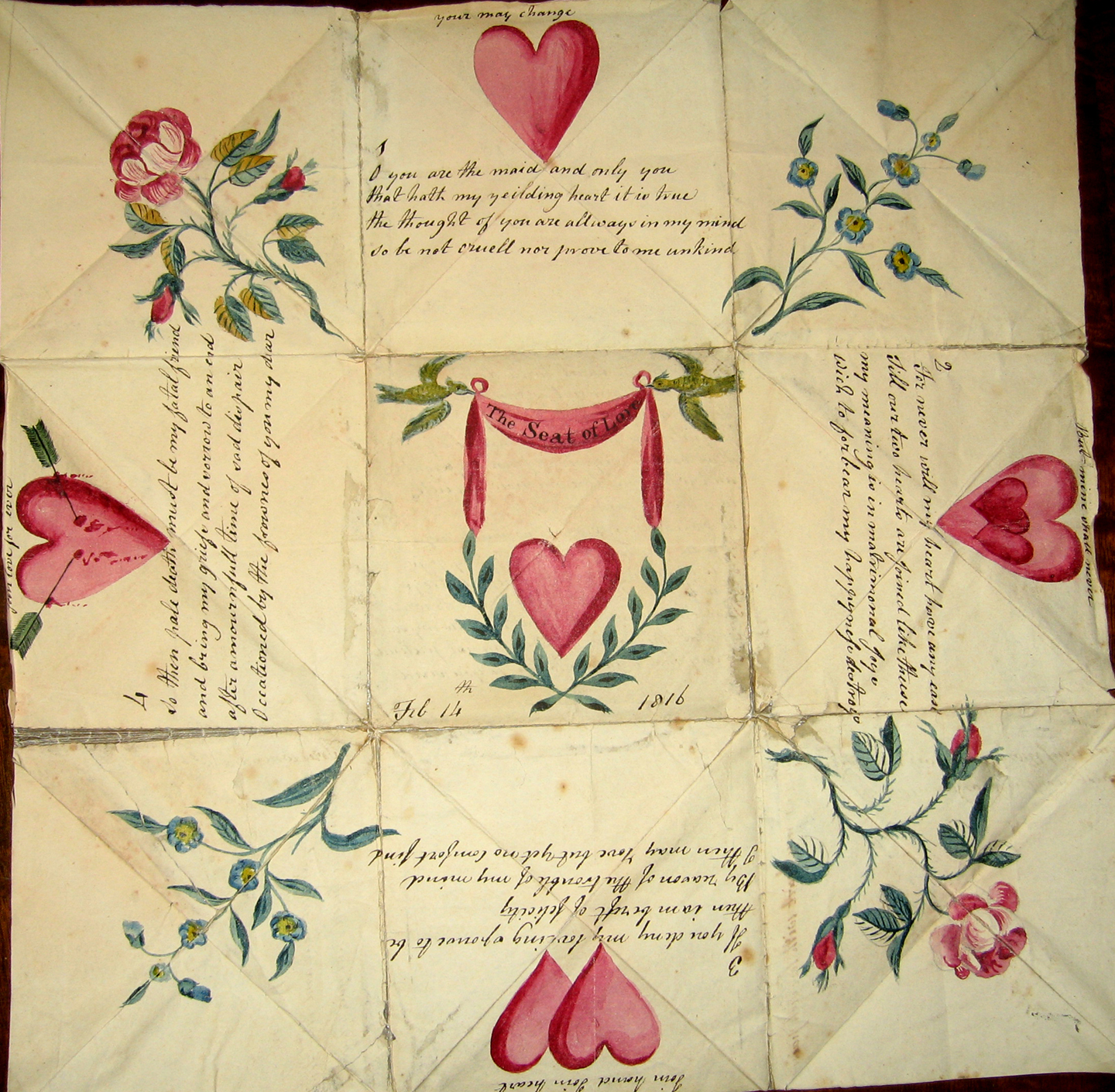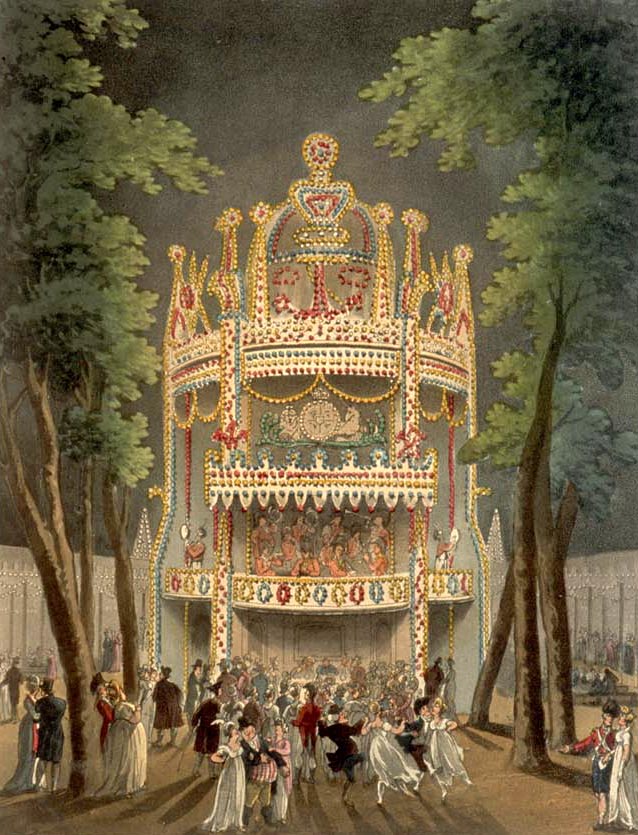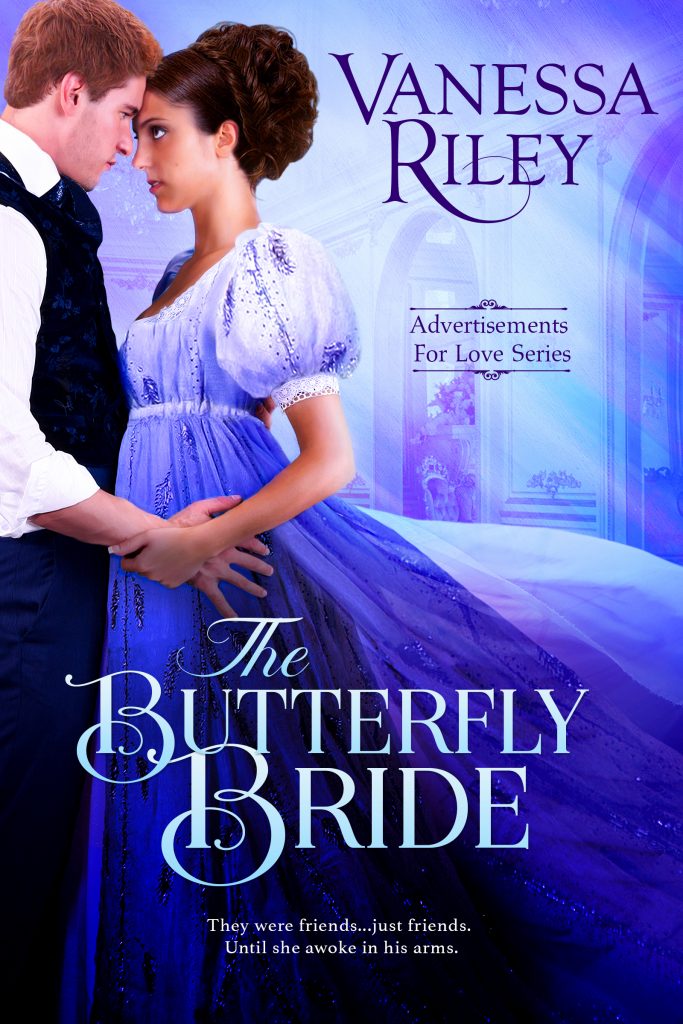Valentine’s Day in Regency England
Cards were already a popular custom for all classes by regency times. Most were home-and-handmade from plain to fancy, depending on what the sender could afford. Fancier ones might include gilt-edged paper and real lace (paper lace didn’t come into production until later in the century). Woodcuts or copperplate engraved cards existed but this process was still hand-done and thus time-consuming, so mass-produced cards didn’t come on the market until the 1820s. This coincided with the standardization of the postal system, making sending cards cheaper.
For those who had trouble with a rhyme, there were publications called “Valentine writers,” chock full of ready-made verses for gentlemen to use. Some even contained poetical replies for ladies to use.
Everybody’s Valentine Writer; or True Lover’s Notebook; and Kemmish’s Annual and Universal Valentine Writer, or the Lover’s Instructor were a couple published in England in the late 18th century.
A sample of a lady’s reply to a gentleman’s verse, from Everybody’s Valentine Writer:
To a Gentleman
With proverbs, sir, I see you play;
With proverbs, too, I answer nay—
The Language of Flowers
Although special significance of flowers became most popular in Victorian times, lovers’ messages through flowers was already seen in regency times. Lady Mary Wortley Montagu, wife of the British ambassador to the Ottoman Empire , described a “secret language of flowers,” when her letters home were published posthumously in 1763. This language was a form of Turkish and Persian poetry called selam, which used words that rhymed with flower names. In 18th century Europe this developed into giving flowers sentimental significance (ie. a rose symbolizing love).
Various and changing meanings were ascribed to different flowers, but you wouldn’t want to receive a striped carnation in 1819, which according to Madame Charlotte de la Tour, who published a dictionary on flower language entitled [sic] Le Language des Fleur, meant “I’m sorry, I must say no.”
Nor would you want to receive a yellow carnation, which meant “You disappoint me.”
Better would be a red rose from your true love; or a pansy (“you occupy my thoughts”); or perhaps an arum, which meant ardor.
The Art of the Valentine Card
The reputedly oldest valentine card in existence is owned by the British Royal Mail. It dates from 1790. Its four points open up to reveal a love poem, but the outside words are already quite enchanting:
“My dear the Heart which you behold,
Will break when you the same unfold,
Even so my heart with lovesick pain,
Sure wounded is and breaks in twain.”
Sources:
The Evening Independent, Feb. 14, 1977
The Year’s Festivals, Helen Philbrook Patten, 1903
The Quest of the Quaint, Virginia Robie, 1916
http://www.newyorker.com/archive/1947/02/15/1947_02_15_021_TNY_CARDS_000207379
http://www.nationalarchives.gov.uk/documents/11feb2011-aac.pdf
Originally posted 2012-02-13 10:00:00.














